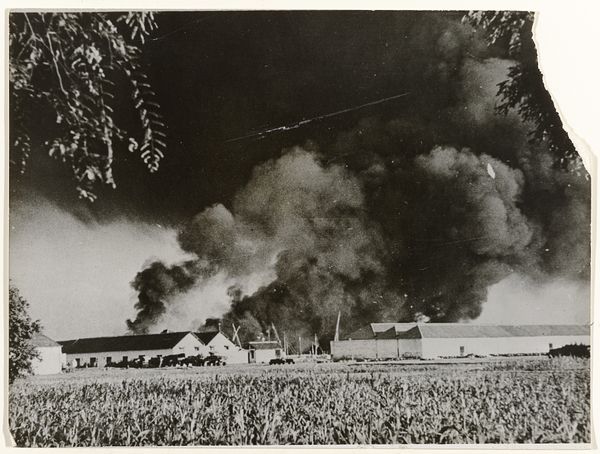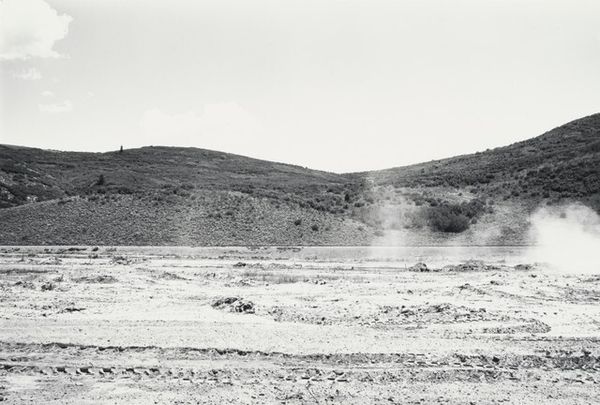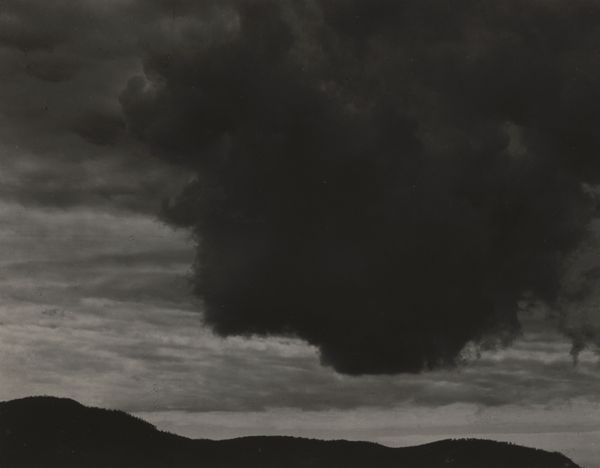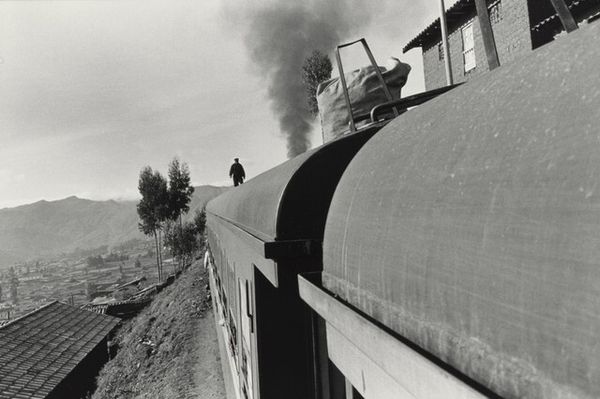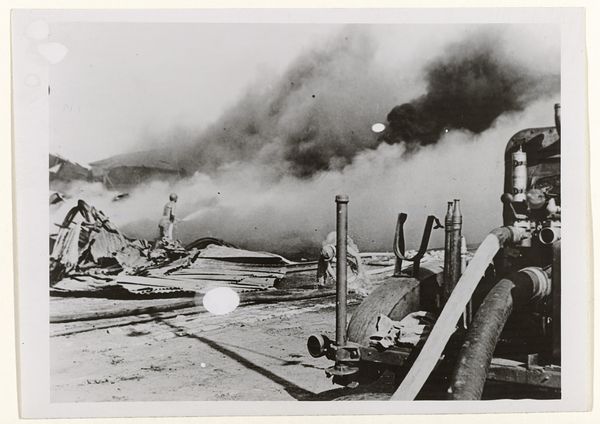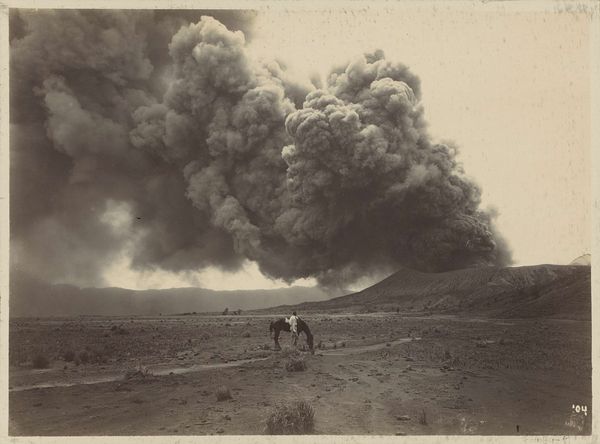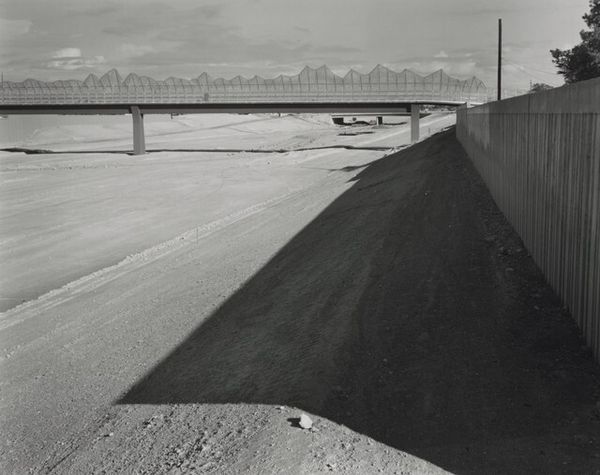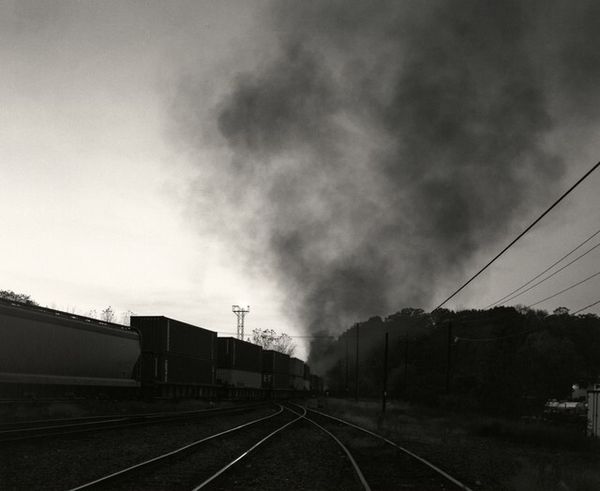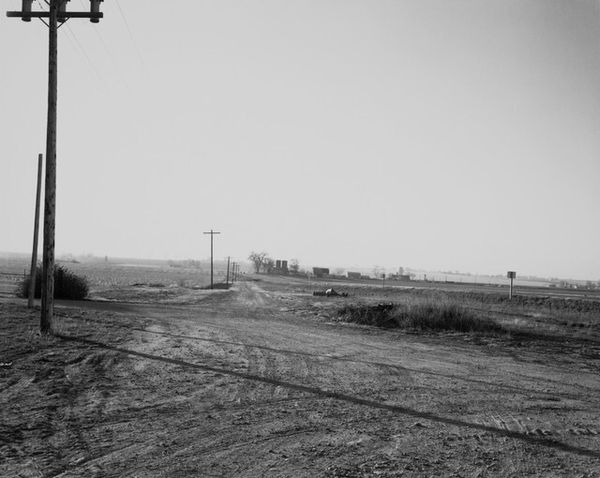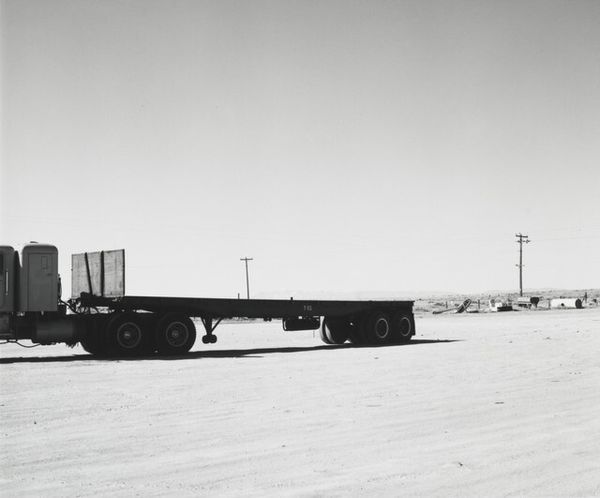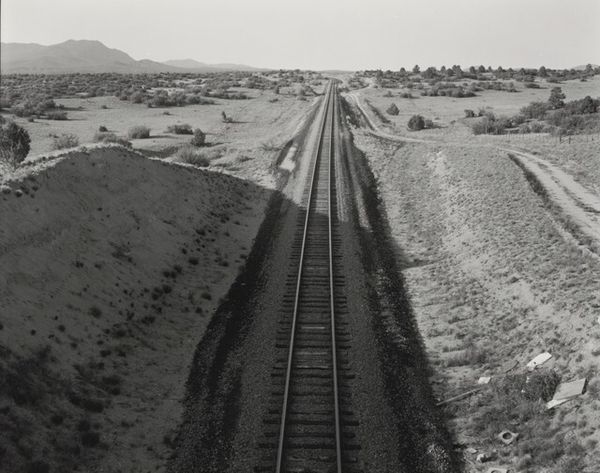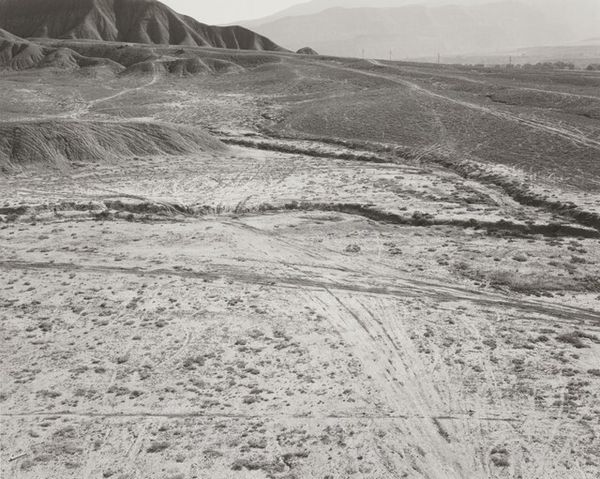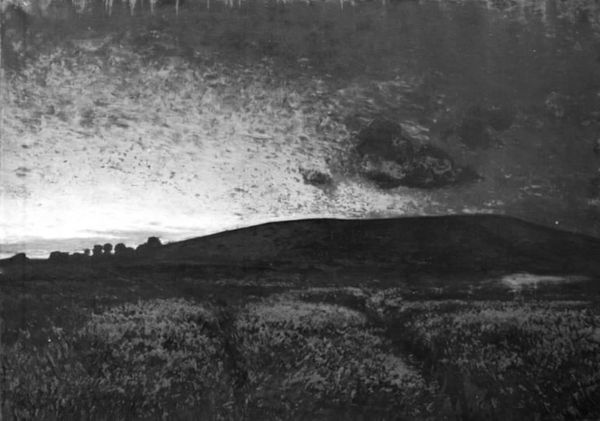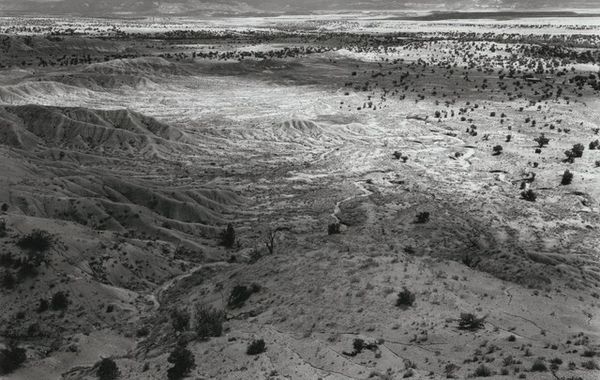
Burning oil sludge, north of Denver, Colorado Possibly 1974 - 1983
0:00
0:00
#
cloudy
#
black and white photography
#
snowscape
#
countryside
#
outdoor scenery
#
sky photography
#
monochrome photography
#
coastline landscape
#
monochrome
#
skyscape
Dimensions: image: 38 × 47.8 cm (14 15/16 × 18 13/16 in.) sheet: 40.4 × 50.5 cm (15 7/8 × 19 7/8 in.)
Copyright: National Gallery of Art: CC0 1.0
Curator: I’m immediately struck by the dramatic plume of smoke—it just dominates the scene, doesn't it? There's an undeniable feeling of…unease. Editor: It's quite evocative, and intentionally so, I think. We're looking at Robert Adams’ “Burning oil sludge, north of Denver, Colorado,” a gelatin silver print dating probably from sometime between 1974 and 1983. Curator: The vast, almost desolate landscape just amplifies the impact. You have that flat, snow-covered plain meeting a low, cloud-streaked sky, with the distant mountains almost disappearing into the haze. Then, erupting from the horizon, this oily black cloud. There’s a lonely tree off to the side—the whole thing feels like a stark warning. Editor: Absolutely. The composition is crucial. Adams places the stark reality of the oil industry, its extraction and its waste, right within this romantic, almost classical landscape tradition. It really forces us to confront the cost, materially, of our energy consumption. I can almost smell the acrid burn. Curator: That tree… it's like a lone witness. Nature observing its own desecration. Do you think that stark, unyielding quality is amplified by it being black and white? There’s no color to distract us from the essential conflict. Editor: The monochrome aesthetic also aligns with documentary photography. Think about the long history of using black and white to depict social issues and environmental degradation. Adams, I think, is placing this work firmly within that tradition— a direct critique aimed at industries shaping the landscape for profit. The small scale of the figures underscores our limited power to stop these forces. Curator: The photograph almost makes you feel powerless too. Such an arresting, unsettling image. I find that I want to turn away, yet, feel an obligation to observe. Editor: Indeed. I appreciate your point, and for me, the genius lies in how it pushes viewers to acknowledge their role, however unwillingly, in systems of consumption that produce images, landscapes, and lives such as these. It's both visually powerful and socially vital. Curator: A challenging work indeed, that lingers long after you turn away. Editor: I agree. It highlights a continuing tension that still demands resolution.
Comments
No comments
Be the first to comment and join the conversation on the ultimate creative platform.
